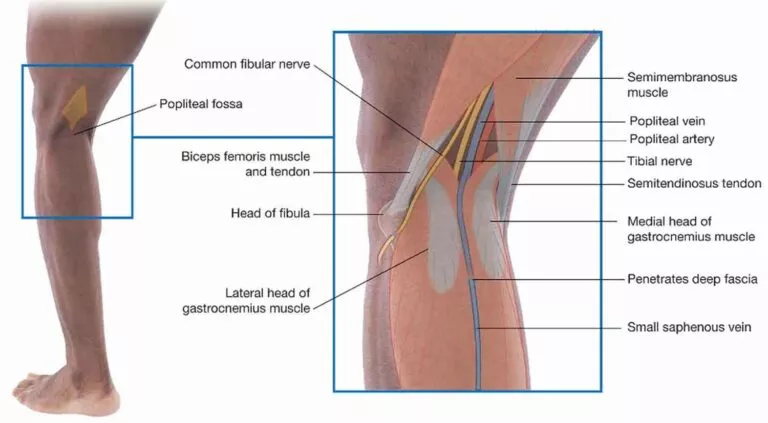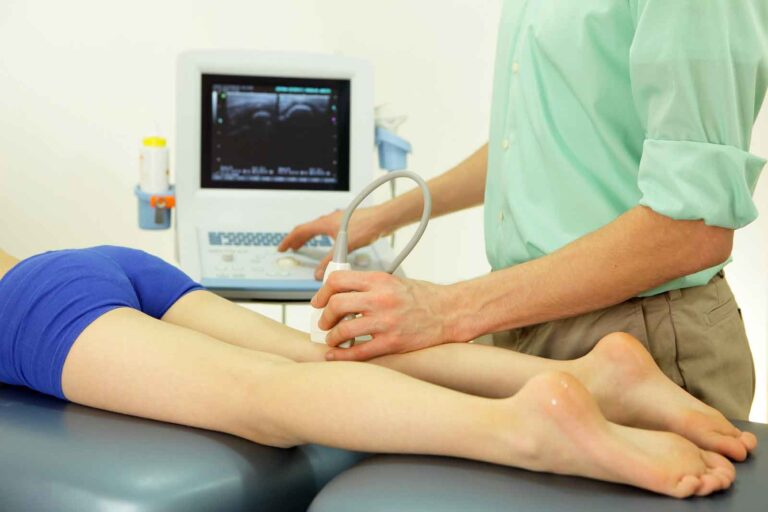WHAT IS POPLITEAL ARTERY ENTRAPMENT SYNDROME?
Popliteal artery entrapment syndrome (PAES) is an unusual condition in which an abnormally positioned or enlarged calf muscle presses on the primary artery behind the knee (popliteal artery). The artery becomes trapped, making it difficult for blood to flow to the lower leg and foot. Popliteal artery entrapment syndrome is most frequent among athletes.
SYMPTOMS
The main symptom of popliteal artery entrapment syndrome (PAES) is pain or cramping in the back of the lower leg (the calf) that happens during exercise and goes away with rest. Other signs and symptoms may include :
- Cold feet after exercise
- Tingling or burning in your calf (paresthesia)
- Numbness in the calf area
If the nearby vein (popliteal vein) also becomes trapped by the calf muscle, you might have :
- Heavy feeling in the leg
- Lower leg cramping at night
- Swelling in the calf area
- Changes in skin color surrounding the calf muscle
- Blood clots in the lower leg or deep vein thrombosis
Symptoms generally affect young, otherwise healthy people under age 40.
WHEN SHOULD YOU SEE A DOCTOR?
See your doctor if you have any leg pain, particularly if you have calf or foot cramping during activity that gets better with rest.
CAUSES
Popliteal artery entrapment syndrome (PAES) is caused by an abnormal calf muscle, generally the gastrocnemius muscle.
The condition might occur from birth (congenital) or develop later in life (acquired). In the congenital form, the calf muscle or nearby artery is abnormally positioned as the baby grows in the mother’s womb. People with the acquired form of PAES have a calf muscle bigger than usual (enlarged).
The abnormal calf muscle presses on the main artery behind the knee (popliteal artery), decreasing blood flow to the lower leg. The lack of blood flow leads to pain and cramping in the back of the lower leg during times of activity.
RISK FACTORS
Popliteal artery entrapment syndrome (PAES) is unusual. The following things raise your risk of the condition.
- Younger age – The condition is most frequently seen in people who are in their late teens or 20s. It’s rarely diagnosed in those over age 40.
- Being male – PAES could occur in anyone, but it is much more common in young men.
- Strenuous athletic activity – Runners, bicyclists, and athletes who try to build muscle fast with weight training routines or high-intensity circuit training are at the greatest risk.
COMPLICATIONS
Long-term pressure on the popliteal artery could cause the artery to narrow (stenosis), causing pain and cramping with just slight activity, such as walking.
In severe cases or when undiagnosed, the nerves and muscles in the leg could become damaged. Blood clots might occur in the lower leg (deep vein thrombosis). Older athletes with signs and symptoms of popliteal artery entrapment syndrome must be checked for popliteal aneurysm, which is common in older men.
DIAGNOSIS
Your doctor will carefully examine you and ask questions about your symptoms and medical history. However, because most people with popliteal artery entrapment syndrome (PAES) are young and usually healthy, diagnosing the condition could sometimes be challenging. The findings from a physical examination usually are normal.
Your doctor will rule out other causes of leg pain, involving muscle strains, stress fractures, chronic exertional compartment syndrome, and peripheral artery disease, which results from clogged arteries.
Tests used to rule out other conditions and diagnose PAES involve the following :
- Ankle-brachial index (ABI) measurement is generally the first test done to diagnose PAES. Blood pressure measurements are taken in your arms and legs during or after walking on a treadmill. The ABI is derived by dividing ankle pressure by arm pressure. The blood pressure in your legs should be greater than that in your arms. But if you have PAES, your ankle pressure decreases during exercise.
- Duplex ultrasound of the calf uses high-frequency sound waves to determine how fast blood is circulating through the leg arteries. This non-invasive test might be done before or after exercise or while you flex your foot up and down, which puts your calf muscle to work.
- Magnetic resonance angiography (MRA) shows the calf muscle that is blocking the artery. It could also reveal how much of the popliteal artery is narrowed. You might be asked to flex your foot or press it against a board during this test. Doing so helps your doctor determine how blood is circulating to your lower leg.
- CT angiography also shows which leg muscle is responsible for the artery entrapment. As with MRA, you might be asked to change the position of your foot during this test.
- Catheter-based angiography enables your doctor to see how blood is flowing to and from the lower leg in real-time. It is done if the diagnosis is still unclear after other, less invasive imaging tests.
TREATMENT
Surgery is the only way to fix the abnormal calf muscle and free the trapped artery. Your doctor will probably recommend surgery if your symptoms significantly affect your everyday or athletic activities.
During surgery, the surgeon makes an incision on the inner calf just beneath the knee, or in the back of the knee, to release the abnormal calf muscle and give the artery more room. This will keep the calf muscle from pressing on the artery in the future. Surgery is carried out while you are under general anesthesia. The procedure takes around one hour. Typically, you will need to stay in the hospital for one day.
If you have had the condition for a long time, you might need artery bypass surgery. Bypass surgery is generally done only on those who have severe narrowing of the artery (stenosis) due to long-term popliteal artery entrapment syndrome.
Surgery to release the calf muscle and artery generally does not affect leg function. When the condition is diagnosed and treated early, a full recovery is expected, and your symptoms must disappear.
If you or anyone you know is suffering from popliteal artery entrapment syndrome, our expert providers at Specialty Care Clinics will take care of your health and help you recover.
Call 469-545-9983 to book a telehealth appointment for an at-home check-up.




